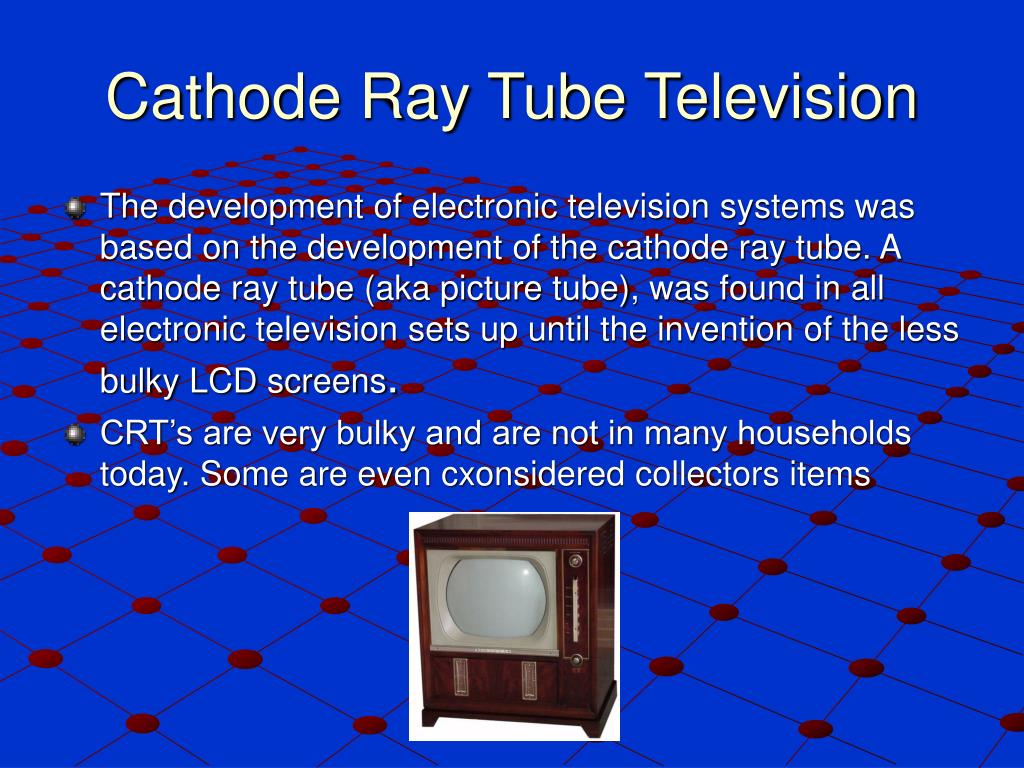

#CATHODE RAY TUBE TELEVISION RADIATION FREE#
When high voltage is applied to the tube, the electric field accelerates the small number of electrically charged ions and free electrons always present in the gas, created by natural processes like photoionization and radioactivity. The Crookes tubes require a small amount of air in them to function, from about 10 −6 to 5×10 −8 atmosphere (7×10 −4 - 4×10 −5 torr or 0.1-0.006 pascal). Instead, electrons are generated by the ionization of the residual air by a high DC voltage (from a few kilovolts to about 100 kilovolts) applied between the cathode and anode electrodes in the tube, usually by an induction coil (a "Ruhmkorff coil"). Operation Diagram showing a Crookes tube circuit.Ĭrookes tubes are cold cathode tubes, meaning that they do not have a heated filament in them that releases electrons as the later electronic vacuum tubes usually do. Residual air in the tube glows pink when it is struck by electrons.
#CATHODE RAY TUBE TELEVISION RADIATION PATCH#
With a magnet held at the neck of the tube (right) the rays are bent upward or downward, perpendicular to the horizontal magnetic field, so the green fluorescent patch appears higher or lower. The term Crookes tube is also used for the first generation, cold cathode X-ray tubes, which evolved from the experimental Crookes tubes and were used until about 1920.Ī Crookes tube demonstrating magnetic deflection. Wilhelm Röntgen discovered X-rays using the Crookes tube in 1895. Crookes tubes are now used only for demonstrating cathode rays. Thomson's 1897 identification of cathode rays as negatively charged particles, which were later named electrons. It was used by Crookes, Johann Hittorf, Julius Plücker, Eugen Goldstein, Heinrich Hertz, Philipp Lenard, Kristian Birkeland and others to discover the properties of cathode rays, culminating in J.J. When a high voltage is applied between the electrodes, cathode rays ( electrons) are projected in straight lines from the cathode. ĭeveloped from the earlier Geissler tube, the Crookes tube consists of a partially evacuated glass bulb of various shapes, with two metal electrodes, the cathode and the anode, one at either end.

The anode is the electrode at the bottom.Ī Crookes tube (also Crookes–Hittorf tube) is an early experimental electrical discharge tube, with partial vacuum, invented by English physicist William Crookes and others around 1869-1875, in which cathode rays, streams of electrons, were discovered. Electrons (cathode rays) travel in straight lines from the cathode (left), as shown by the shadow cast by the metal Maltese cross on the fluorescence of the righthand glass wall of the tube. Early type of cathode ray tube A Crookes tube: light and dark.


 0 kommentar(er)
0 kommentar(er)
